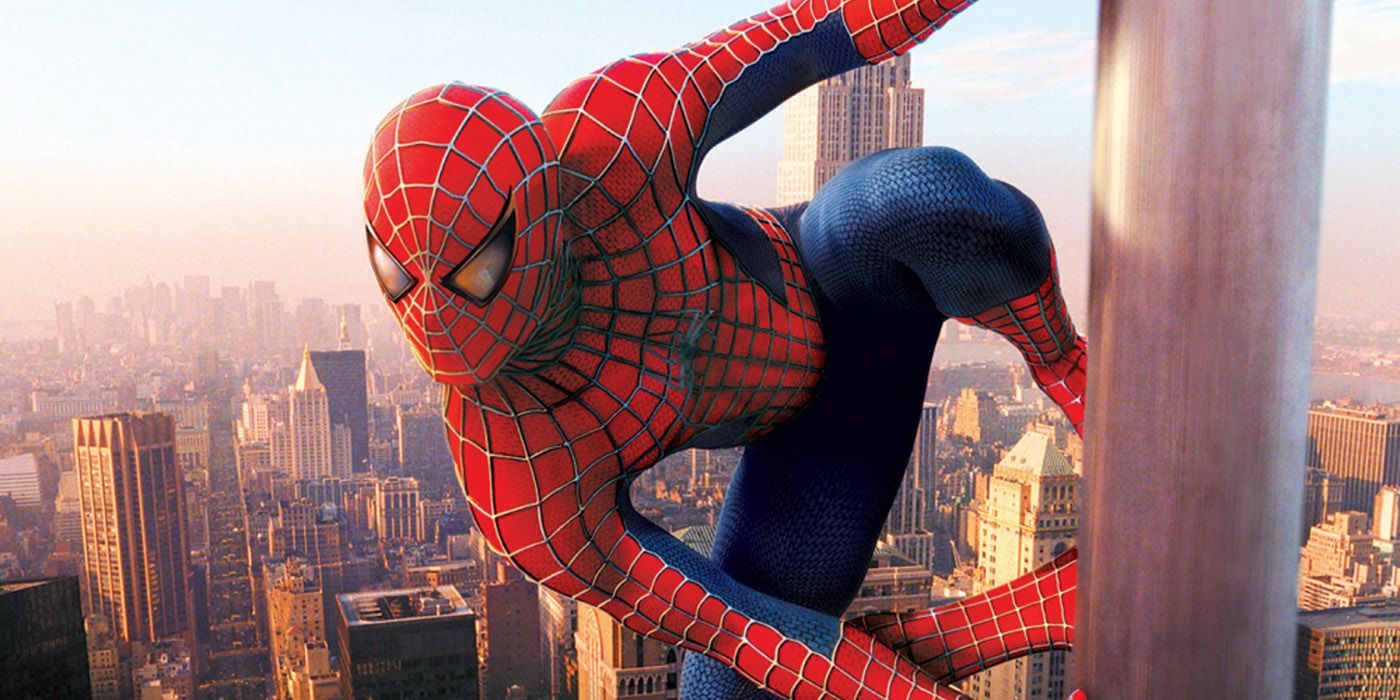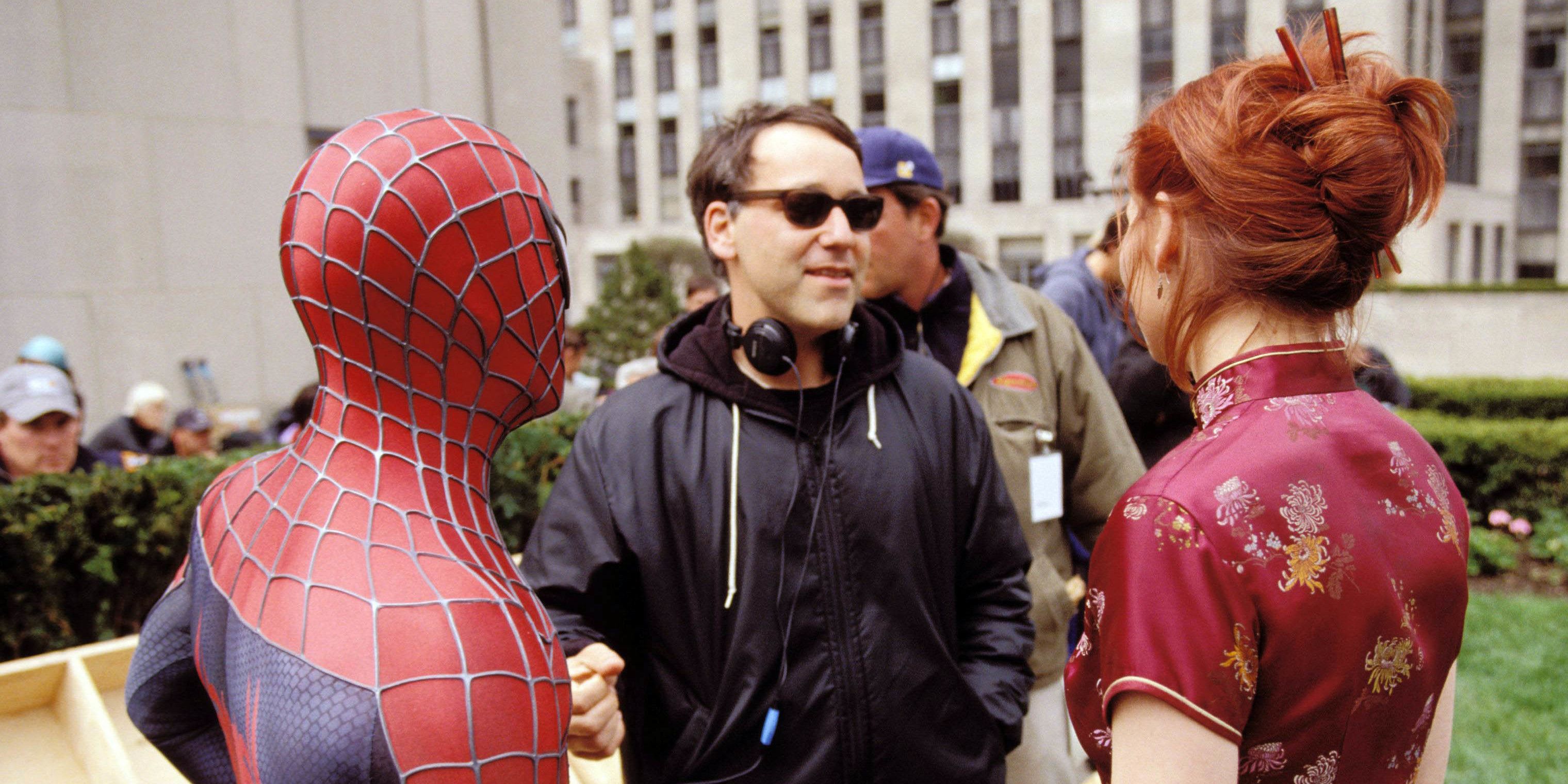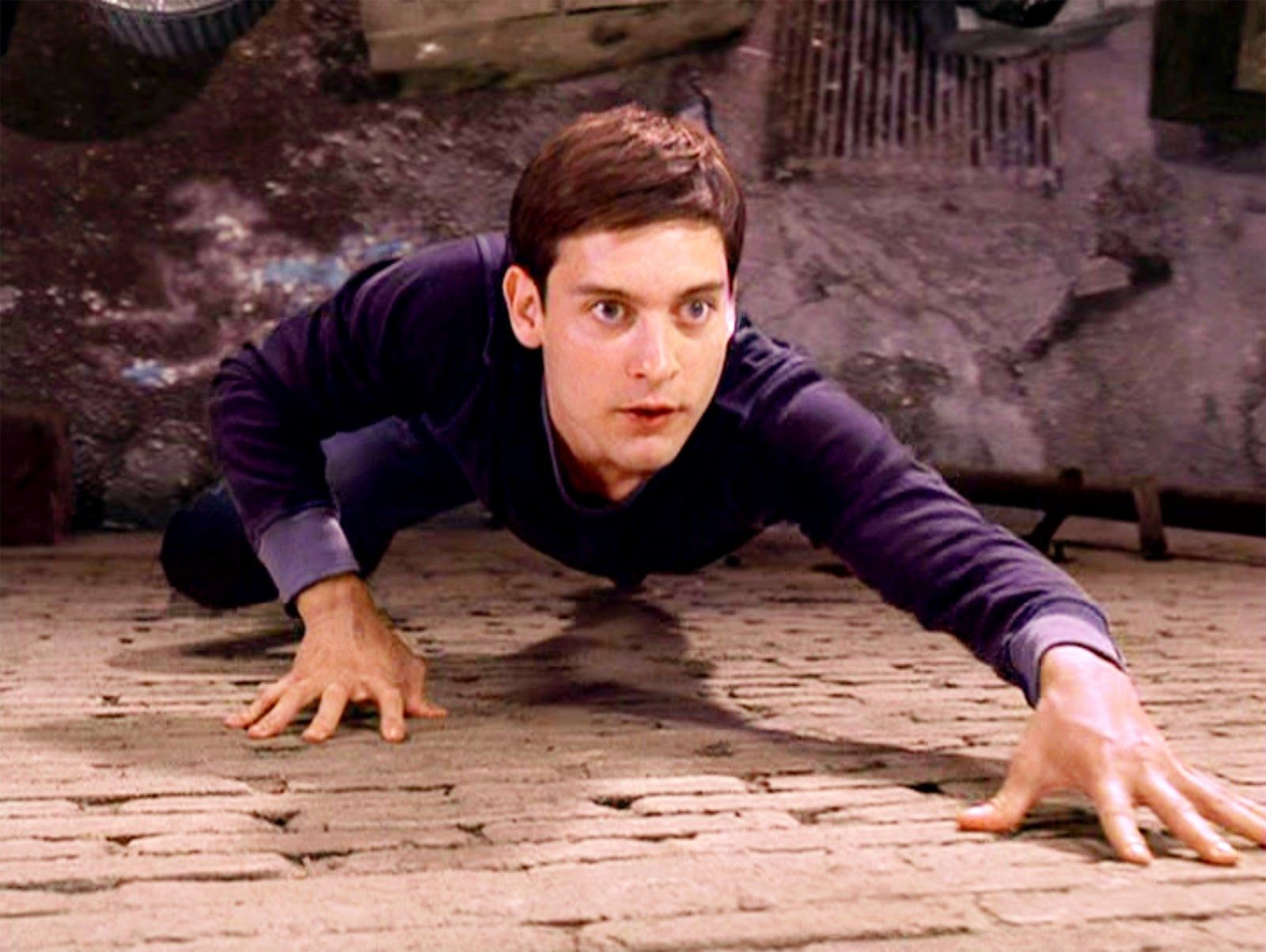It’s hard to overstate just how big a deal Sam Raimi’s 2002 comic book adaptation Spider-Man was. The film was coming on the heels of the success of 2000’s X-Men (which put a serious spin on the superhero genre) and perhaps buoyed by that film’s achievement, Spider-Man lit up like a rocket when it hit theaters on May 3, 2002. The movie was famously the first ever to score over $100 million on its opening weekend, taking in a total of $114.8 million in its first few days of release. This was unheard of, and that record stood a full four years until the first Pirates of the Caribbean sequel surpassed it—but make no mistake, Spider-Man broke the $100 million ceiling and set into motion full-blown superhero fever at every studio.
That included Sony Pictures, which tapped Raimi to return and direct Spider-Man 2 to critical raves and $783 million worldwide, which was then followed up by the Raimi-helmed Spider-Man 3, which grossed a franchise-high $890.8 million worldwide but suffered a poor reception from critics and fans. The wheels were in motion for Raimi to return for a creatively invigorated Spider-Man 4, and he’d gotten pretty far along in the development process, but Sony suddenly scrapped the film and fast-tracked a brand new reboot, The Amazing Spider-Man.
So what happened to Spider-Man 4? Why did Sony trash the project at the last minute? What did Raimi have planned for his fourth superhero film? The sequel is one of Hollywood’s more fascinating “what ifs” in that it would have kept the same creative team intact despite the previous film being something of a stinker, and by all accounts Raimi seemed intent on righting the ship. So let’s dig in.
To understand what happened to Spider-Man 4 we must first go back to the development and production of Spider-Man 3. One of the biggest criticisms lodged at the sequel is that it’s overstuffed with too many villains. There are some other character issues here and there, but the movie really falls apart when Venom enters the fray. There’s a good reason for this: Sam Raimi never wanted Venom in the movie.
Indeed, while Spider-Man and Spider-Man 2 brought to life the villains Green Goblin and Doc Ock, respectively, Raimi had his sights set on Sandman as the primary villain of Spider-Man 3 while also bringing back James Franco’s Harry Osborne to wrap up his character’s storyline. However, producer Avi Arad reportedly convinced Raimi to also include Venom, a character the fans loved but Raimi didn’t—the filmmaker said he couldn’t get over Venom’s lack of humanity. Indeed, while Raimi played nice and tried to execute the character as best he could, he said this in 2015 about the film:
“It’s a movie that just didn’t work very well. I tried to make it work, but I didn’t really believe in all the characters, so that couldn’t be hidden from people who loved Spider-Man. If the director doesn’t love something, it’s wrong of them to make it when so many other people love it. I think [raising the stakes after Spider-Man 2] was the thinking going into it, and I think that’s what doomed us. I should’ve just stuck with the characters and the relationships and progressed them to the next step and not tried to top the bar.”
So while Spider-Man 3 was a commercial success, critics and fans were not so high on the sequel. Thus, in developing Spider-Man 4, Raimi wanted to set things straight again. He began work with Zodiac screenwriter James Vanderbilt in 2008 after Spider-Man scribe David Koepp passed, and David Lindsay-Abaire and Gary Ross did further script revisions. The entire core cast was set to return, but this time around Raimi was intent on finally bringing to the screen a Spider-Man villain close to his heart: Vulture.
Indeed, Raimi considered Vulture for Spider-Man 3 with Ben Kingsley in the role, but ultimately cut the character. This time, though, he wasn’t going to be talked into using a character he didn’t like, and he had none other than John Malkovich set to play the antagonist. As the script developed, Raimi also threw Felicia Hardy into the mix with Anne Hathaway in the role, though instead of becoming Black Cat the character would become the villain Vulturess in the film.
But as work continued on Spider-Man 4, Raimi couldn’t quite get the script right. He was continually unhappy with the story, and Sony wanted to bring the Lizard into the fold, finally capitalizing on Dylan Baker’s role from the first three movies. Raimi was admittedly exhausted—this was still only a year or so after Spider-Man 3 came out, and the filmmaker hadn’t made a non-Spider-Man movie since 2000’s The Gift. And thus, he and Sony decided to part ways, with the filmmaker describing the split thusly:
"It really was the most amicable and undramatic of breakups: It was simply that we had a deadline and I couldn't get the story to work on a level that I wanted it to work. I was very unhappy with Spider-Man 3, and I wanted to make Spider-Man 4 to end on a very high note, the best Spider-Man of them all. But I couldn't get the script together in time, due to my own failings, and I said to Sony, ‘I don't want to make a movie that is less than great, so I think we shouldn't make this picture. Go ahead with your reboot, which you've been planning anyway.’ And [Sony co-chairman] Amy Pascal said, ‘Thank you. Thank you for not wasting the studio's money, and I appreciate your candor.’ So we left on the best of terms, both of us trying to do the best thing for fans, the good name of Spider-Man, and Sony Studios."
The curious thing about all of this, though, is that Sony seemed to be planning to cancel Spider-Man 4 for quite some time. Mere hours after it was announced that Spider-Man 4 was scrapped and the 2011 release date was kaput, Sony revealed that James Vanderbilt—who penned the initial draft of Spider-Man 4—had already written a reboot called The Amazing Spider-Man and the film was coming out in 2012.
This was likely a move to ease shareholders’ concerns that Sony was out of the Spider-Man business, and the studio had to keep making Spider-Man movies or the rights to the character would revert back to Marvel Studios (which was forging its own path by solo-producing a film called Iron Man at the time), but still, it signals the studio saw the writing on the wall and/or didn’t have its full heart in trying to make Raimi’s Spider-Man 4 actually work.
Whatever the case, we’ll never know if Spider-Man 4 would have been a creative bounce-back for the series or further proof that Raimi should probably move on. It’s somewhat telling that his next film was the gleefully horrifying Drag Me to Hell, which absolutely exuded creative freedom.
Ultimately Sony didn’t find what they were looking for with The Amazing Spider-Man. That first reboot was fine and grossed $757 million worldwide, but the sequel fared a bit worse financially ($708 million) and suffered from tepid reviews. The studio moved to its second reboot with Spider-Man: Homecoming, which was a smashing success and led to Spider-Man: Far from Home and now an additional sequel.
Regardless, the impact that Raimi had on not only the Spider-Man character but also the superhero genre as a whole is undeniable. And while Spider-Man 4 may not have come together, it’s interesting to think about what would have happened if the film had been made. If the film was a hit and was creatively and financially lucrative, how would that have shaped the superhero genre going forward, especially with Marvel Studios emerging? Would the current Sony/Marvel Studios deal even happen? Would Raimi have eventually rebooted his own franchise and passed the baton to a new Spider-Man like Miles Morales? Again, we’ll never know, but at least we can now take heart in knowing we're about to see what Rami can do with Doctor Strange.
Note: This article was originally published at a prior date.




